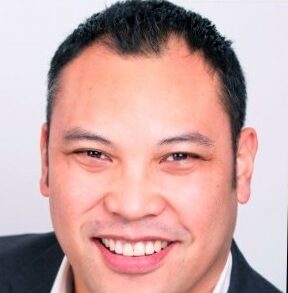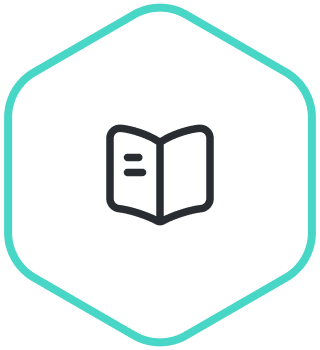Through the good and bad you can always learn something. It’s fair to say that for a lot of people who work in Talent Acquisition, 2023 was a challenging year. It is however not just those in TA that can take reflections forward to shape 2024, but leaders from across the business.
Talent is the life blood of any organisation and how we can learn and grow will shape business outcomes, of that much, I’m certain.
This article was pulled together collaboratively with the input from six Talent experts and leaders across various industries. Thanks to:
- Rachel Barr, Group Talent Acquisition Director and Head of Strategic Workforce Planning, Ricardo
- Andrew Clark, Lead Talent Acquisition Specialist, GlobalLogic
- Tom White, Global Talent Acquisition Director, RPS Group
- Natalie Douglass, Founding Director, Luminos Insight
- Diane Ward, Interim Global Head of TA
- Tom Hacquoil, CEO, Pinpoint
for your input, knowledge and most importantly time.
Over the last 3 years, we’ve had a global pandemic, ‘the great resignation’, ‘the great reshuffle’, ‘Tech Winter’, ‘Global Recession’, the war in Ukraine, the conflict in Gaza and wider Middle East, an energy crisis, cost of living crisis, the arrival of Chat GPT …the list goes on. All these things mean that we have seen some turbulent times in the world of talent acquisition, from only certain sectors hiring, to everyone hiring... a lot, to freezes, restructures and redundancies. If we look back on 2023 there are some key lessons that we can take into 2024.
We need to get better at (agile) workforce planning
This is the top take away from 2023. We can’t continue to operate the way we have been in today’s workplace, a cycle based on over-hiring, followed by layoffs and redundancies. Several articles and industry influencers have suggested that this is a ‘course correction’ from over hiring, however it is more a case of history repeating itself. The difference this time was the connected nature of the world combined with the sheer money invested in the next big thing.
Looking at some high-profile businesses, like Google (+11%), Amazon (+43%) or Apple (+31%), basic employment metrics show they still employ more people than they did with year-on-year growth if you normalise the late 2021 into 2022 peak. However, as the economy has continued to fluctuate, more and more business are either shrinking headcount or at least being more deliberate with hiring. Take Peloton for example, showing a 40% headcount reduction since December 2021. This is not a course correction, rather a demand generation one.
Businesses will always grow and slow, it’s the nature of demand and as we see this happen faster in today’s world, all businesses will need to get better at workforce planning. Businesses will need to find a way to ensure they have the right resources for the right period of time to set them up for success. Panic hiring and firing are counterproductive to long term business stability.
As Rachel Barr, Group Talent Acquisition Director and Head of Strategic Workforce Planning, Ricardo notes; “Most TA functions will be cognoscente of the market currently and how fast it is changing which will impact workforce planning. SWP is NOT 100% fool proof as plans do change and they change quickly.”
Failing to plan effectively is bad for the company, bad for your finances, and bad for employees. The top tips to improve workforce planning are:
- Spend time understanding workforce planning and speak to experts.
- Spend time understanding the skills and responsibilities required in your organisation today and for the future.
 Tom Hacquoil, CEO, Pinpoint shares: Meet with senior leadership and department heads to discuss company goals for the year. Is this a year of growth, or efficiency? Are there certain departments or regions we want to develop? Answering these questions will help your team to be aligned with leadership on the hiring mission and messaging. Next, give department heads the opportunity to design their ideal team to reach that year’s goals, budget notwithstanding. This will grant you greater visibility into their vision for the department, and what skills they want on the team. Then, help department heads refine each job description and prioritize each role, based on actual needs and realistic expectations. Some roles may be less vital this year or could be solved without a full-time hire. In these conversations, you can help shape the plan for each department, manage expectations around hiring, and avoid frustration later on.
Tom Hacquoil, CEO, Pinpoint shares: Meet with senior leadership and department heads to discuss company goals for the year. Is this a year of growth, or efficiency? Are there certain departments or regions we want to develop? Answering these questions will help your team to be aligned with leadership on the hiring mission and messaging. Next, give department heads the opportunity to design their ideal team to reach that year’s goals, budget notwithstanding. This will grant you greater visibility into their vision for the department, and what skills they want on the team. Then, help department heads refine each job description and prioritize each role, based on actual needs and realistic expectations. Some roles may be less vital this year or could be solved without a full-time hire. In these conversations, you can help shape the plan for each department, manage expectations around hiring, and avoid frustration later on.
- Invest in Technology, there are lots of solutions out there that can help.
- Don’t get stuck in old ways of thinking about employee types (permanent, temporary, fixed term, contractors etc), the world is changing fast. Look at the work, not the worker.
 Andrew Clark, Lead Talent Acquisition Specialist at GlobalLogic recommends considering alternative solutions, “Workforce planning extends beyond hiring and terminating employees and should consider several options, including technological solutions, temporary employees and contractors. This might also include adjustments to operations to remove bottlenecks, enhance efficiency, scale operations and employee transfers.
Andrew Clark, Lead Talent Acquisition Specialist at GlobalLogic recommends considering alternative solutions, “Workforce planning extends beyond hiring and terminating employees and should consider several options, including technological solutions, temporary employees and contractors. This might also include adjustments to operations to remove bottlenecks, enhance efficiency, scale operations and employee transfers.
- Create a culture where supporting workforce planning is a whole business responsibility with senior leadership being held accountable for timely delivery of planning and partnership with HR and TA.
 Tom White, Global Talent Acquisition Director, RPS Group
Tom White, Global Talent Acquisition Director, RPS Group
“I think businesses need to take a long-term view when looking at workforce planning and their operating models/Head count. We need to start to factor in peaks and troughs of business and look at ways to implement blended models that contain a core team of people with the ability to outsource or utilise short term resource to combat increased workloads as they occur and downsize when necessary. This approach also allows you to retain key talent and IP that is often lost in redundancy and restructuring scenarios”.
 Natalie Douglass, Founding Director, Luminos Insight
Natalie Douglass, Founding Director, Luminos Insight
“Workforce planning should be about doing what’s right for your business. A common mistake is not considering how adaptable and agile your internal workforce can be and how unlocking this leads to better employee engagement. Workforce planning is an interactive process rather than a tick box exercise, it should evolve and change with your business. It is not a one size fits all approach.”
The Skills economy is real
If you work in HR, Talent Acquisition or run a business you can’t make it through the day without hearing about how skills shortages are making it harder to find the talent you need.
The reality is the skills that workers possess, and the skills that industries need, are constantly changing. This is not new, from the invention of the first wheel, technological innovation has created new industries and required people to learn new ways of working.
Let’s look at agriculture as an example. In 1900 approximately 40% of US employment was in the sector, by the early 2000s it was less than 2%. The difference today is that change is faster. Things that took 50 years are now taking 5 and our systems and processes (starting with education) can’t cope.
You need to create new ways of understanding potential, developing internal employees, and investing for future return, while accepting you may lose people along the way. A portion of this comes back to workforce planning and making early decisions about what you buy vs what you build and potentially what you bot (automate).
 Andrew Clark, Lead Talent Acquisition Specialist at GlobalLogic
Andrew Clark, Lead Talent Acquisition Specialist at GlobalLogic
“For companies looking to recruit it means investing time understanding the current skills utilised within your organisation and how likely they are to change. You shouldn't just look inside your company but look at your competitors. If they are on a hiring spree, it could give you some key insights into where your industry is going and what your organization needs to do to prepare for it.”
LinkedIn recently stated that adverts posting skills and responsibilities generated 21% more applications, vs traditional adverts, they also saw a 27% increase in female applicants. Recruiters searching skills can access a talent pool that is 11 times bigger. If you don’t understand the skills you need, then you will struggle.
Operational leaders must work closer with those involved with Talent Acquisition and Development to ensure that growth isn’t impacted because they can’t hire the right people and the right time. According to the latest Quarterly Recruitment Outlook by the British Chambers of Commerce (BCC) Insights Unit 73% of firms attempting to recruit have faced difficulties, as the economy continues to improve, this is likely to get worse.
 Rachel Barr, Ricardo agrees; “Seamless work with your Talent Management and L&D teams is critical here. When discussing recruitment requirements, the conversation should not only be about how and where we hire externally but how we organically build the skill sets required within (training etc). Succession planning also goes hand in hand with workforce planning ie: the underpin of everything we do.”
Rachel Barr, Ricardo agrees; “Seamless work with your Talent Management and L&D teams is critical here. When discussing recruitment requirements, the conversation should not only be about how and where we hire externally but how we organically build the skill sets required within (training etc). Succession planning also goes hand in hand with workforce planning ie: the underpin of everything we do.”
 Tom White, RPS Group. “Companies need to move away from traditional competency/experience bias and look at how people can adapt and utilise their potential. For me organisations should understand their employee’s existing skills and create opportunities for people to grow and develop internally. This not only helps to combat “skills shortages” but also saves businesses from spending huge amounts to attract people externally whilst combating and attrition figures which frequently happen when people feel they can’t develop in their roles.”
Tom White, RPS Group. “Companies need to move away from traditional competency/experience bias and look at how people can adapt and utilise their potential. For me organisations should understand their employee’s existing skills and create opportunities for people to grow and develop internally. This not only helps to combat “skills shortages” but also saves businesses from spending huge amounts to attract people externally whilst combating and attrition figures which frequently happen when people feel they can’t develop in their roles.”
Andrew Clark, and Natalie Douglass agree that talent pools will become increasingly more important and will be a trend that we see grow in 2024. Building and nurturing a pool of candidates that possess the skills needed for the jobs you recruit for means that you can directly approach candidates when jobs come in. In the race to place, this saves valuable time and money and is ideal for hard to fill vacancies and industries with labour shortages.
Candidate and employee experiences remain a vital metric
Alongside looking at workforce planning and developing skills, businesses must invest resource in the experience they create for their people.
Looking on LinkedIn, Glassdoor or any place people have a forum to express their opinion you can see candidate experience (CX) and employee experience (EX) are hot topics. As the TA professionals that have been out of work find new employment following gruelling experiences in the job market, many will likely prioritise CX when back in role. As the return to office (RTO) debate continues, combined with economic activity (easing or worsening) EX will continue to be front and centre of mind for many HR and business leaders.
The importance of what it is like to interact with your business, either as a candidates, employee, or customer, will have an impact on how easy it is to find, engage, onboard, and develop talent. The companies that get this right will gain a competitive advantage.
 As Natalie Douglass, Luminos Insight shares; “lack of communication and engagement about internal strategies can often cause a problem. Companies are attempting create better employee experience but are not effectively implementing it. Talent insight is key to this because employers can really take time to understand both the external and internal talent pools and what is important to them. They can then use this information to think about how best to engage with talent and how to attract or retain them – pensions might be attractive to some, but flexible working might fit better for others. Maybe you can’t please everyone, but unless you have the insight, you are guessing.”
As Natalie Douglass, Luminos Insight shares; “lack of communication and engagement about internal strategies can often cause a problem. Companies are attempting create better employee experience but are not effectively implementing it. Talent insight is key to this because employers can really take time to understand both the external and internal talent pools and what is important to them. They can then use this information to think about how best to engage with talent and how to attract or retain them – pensions might be attractive to some, but flexible working might fit better for others. Maybe you can’t please everyone, but unless you have the insight, you are guessing.”
- Candidate Experience. Looking at 2023 candidate experience continues to vary significantly by organisation. There are numerous articles on time to apply, difficulty to apply and ghosting. This delta between organisations has been augmented by significant layoffs impacting recruiters as companies re-sized throughout 2023.
 Tom White, RPS “For me candidate experience hasn’t massively improved in the past 20 years, in that time the development and rise of an on demand/immediacy for consumers in their day to day lives is now a norm.(Think Amazon, uber eats, Spotify) Many firms still expect you to fill out an extensive number of details (that can usually be found on the cv you are asked to submit) when applying for roles that can take an age.”
Tom White, RPS “For me candidate experience hasn’t massively improved in the past 20 years, in that time the development and rise of an on demand/immediacy for consumers in their day to day lives is now a norm.(Think Amazon, uber eats, Spotify) Many firms still expect you to fill out an extensive number of details (that can usually be found on the cv you are asked to submit) when applying for roles that can take an age.”
Many TA professionals found themselves on the other side of the process for the first time in a long time (especially when you consider late 2021 into 2022 it was a recruiter’s market). This meant a vocal community became exposed to inadequacies in the processes of many organisations, from small business right through to enterprise. Many have vowed to close the gap on return to employment.
2. Employee Experience. Businesses must understand the lived experience within their organisation and realise that employees tend to have long memories.
One of the biggest debates of the year was Return to Office (RTO). We have seen a significant number of companies insist on some form of RTO, varying from one to five days a week. The personal impact on individuals varies greatly but is worst in companies that insisted remote working was the future, then pivoted to flexible hybrid to then a more formal RTO.Their people have moved, sold cars, changed childcare provisions etc and in a challenging market now don’t know what to do, but certainly feel cheated.The full impact of this is yet to be seen due to the cost-of-living crisis, increasing interest rates and a relatively flat (or declining job market), however with the first glimmers of reducing interest rates, 2024 is likely to see some businesses face significant attrition problems.
 Rachel Barr, Ricardo agrees: “This is going to bite in 2024/25. Rightly or wrongly companies will want their ROI on real estate so whilst I anticipate a significant number of companies doing a lot of due diligence and work on where they are located, I think we are gradually moving back to a hybrid of 2-3 days in the office, with flexibility to do 1 week in the office 1 week at home, all dependent on your work and what needs doing. Those that allow as much flexibility within the hybrid model as possible will win. Those companies that are already mandating the days you are in the office will not only see increased attrition but will become targeted hunting grounds for other organisations.”
Rachel Barr, Ricardo agrees: “This is going to bite in 2024/25. Rightly or wrongly companies will want their ROI on real estate so whilst I anticipate a significant number of companies doing a lot of due diligence and work on where they are located, I think we are gradually moving back to a hybrid of 2-3 days in the office, with flexibility to do 1 week in the office 1 week at home, all dependent on your work and what needs doing. Those that allow as much flexibility within the hybrid model as possible will win. Those companies that are already mandating the days you are in the office will not only see increased attrition but will become targeted hunting grounds for other organisations.”
Additionally, the continued rise in employees taking to social media has led to companies being called out for ‘Benefit Washing’ and ‘Virtue Signalling’ by posting about values that are not actually lived or felt by employees. This was especially true with organisations claiming they were a family then laying off 20% of the workforce or promoting how supportive they were too employees, despite record burnout. Cancel culture is real and it’s moving from celebrities to companies, a shift in economic dynamics could see some companies struggle to repair their EVP.
 Rachel Barr: “Companies need to start realising that senior leadership must lead by example and that values have never been more important to both candidates and employees. A moral conscience has never been needed more and in a world where everything can be played out online, get smart and start treating employees with the respect they deserve or expect to be outed via Glassdoor. Underrepresented communities are placing more and more importance on this. If the sentiment isn’t authentic, or the words and behaviour honest, candidates will know. A tough job market isn’t an excuse to not work on these things.”
Rachel Barr: “Companies need to start realising that senior leadership must lead by example and that values have never been more important to both candidates and employees. A moral conscience has never been needed more and in a world where everything can be played out online, get smart and start treating employees with the respect they deserve or expect to be outed via Glassdoor. Underrepresented communities are placing more and more importance on this. If the sentiment isn’t authentic, or the words and behaviour honest, candidates will know. A tough job market isn’t an excuse to not work on these things.”
 Natalie Douglass, has noticed the shift. “Employers are responding to the closer connection between work and home, with a great focus on employee wellbeing. Many diversity and inclusion strategies now include employee wellbeing and specifically financial wellbeing. Some employers, such as River Island, have recognised that their employees are struggling with the cost-of-living crisis, and have offered care packages and free meals as a benefit. In 2024, I believe that employee engagement and employee wellbeing will be at the forefront of employers’ minds. I have seen an increase in clients asking for research into the motivations, aspirations and general perceptions of the talent pools that they are looking to attract, as well as research into what retention strategies have been used effectively by competitors. This shows that the approach to recruitment is much more rounded, strategic and thought out than in previous years.”
Natalie Douglass, has noticed the shift. “Employers are responding to the closer connection between work and home, with a great focus on employee wellbeing. Many diversity and inclusion strategies now include employee wellbeing and specifically financial wellbeing. Some employers, such as River Island, have recognised that their employees are struggling with the cost-of-living crisis, and have offered care packages and free meals as a benefit. In 2024, I believe that employee engagement and employee wellbeing will be at the forefront of employers’ minds. I have seen an increase in clients asking for research into the motivations, aspirations and general perceptions of the talent pools that they are looking to attract, as well as research into what retention strategies have been used effectively by competitors. This shows that the approach to recruitment is much more rounded, strategic and thought out than in previous years.”
 As Andrew Clark highlights, in 2024 DE&I strategy still needs to be firmly on the agenda for candidate and employee engagement. TA teams will need to look at how they infuse their strategy throughout the recruitment process right through into onboarding strategy and beyond.
As Andrew Clark highlights, in 2024 DE&I strategy still needs to be firmly on the agenda for candidate and employee engagement. TA teams will need to look at how they infuse their strategy throughout the recruitment process right through into onboarding strategy and beyond.
The rise of machines - well AI
In November 2022 Open AI launched Chat GPT and 2023 has seen an explosion in new technology, vernacular, and purported subject matter experts.
We’ve yet to see the full impact of this change and most companies’ adoption has been limited to a few ‘tech forward’ employees using ChatGPT to draft blogs. Despite a handful of thought leaders in TA and HR playing down the impact, the consensus is that this new technology will change the way we work forever.
- AI will be unavoidable – by the end of 2024 it will be nearly impossible to avoid AI. Companies like Microsoft, Salesforce, Adobe, Google, and LinkedIn are building generative AI into their core solution suite. Although some companies and demographics will adopt AI quickly and seamlessly there will be a lot of companies and employees that need upskilling, and adoption will take longer. However, we will all be exposed to AI, even if we aren’t aware that the tools, we use are powered by it. Talent Acquisition teams especially will be using AI in force this year and beyond, specifically via platforms such as LinkedIn.
- AI will erode the barriers between large and small companies. Smaller companies will be able to harness the huge range of affordable and powerful technology to better compete with larger industry players if they use it to leverage a highly skilled and tech savvy workforce.
Rache l Barr “It will be interesting to see how companies who don’t have mega budgets for EVP, utilise their newfound ability to go up against large recognisable organisations, with clever disruptive AI led positioning and campaigns. There will be more choice for candidates and an even playing field as smaller companies can offer a lot that large organisations can’t such as flexible working, agility, less bureaucracy.”
l Barr “It will be interesting to see how companies who don’t have mega budgets for EVP, utilise their newfound ability to go up against large recognisable organisations, with clever disruptive AI led positioning and campaigns. There will be more choice for candidates and an even playing field as smaller companies can offer a lot that large organisations can’t such as flexible working, agility, less bureaucracy.” - Workforces will change shape. As technology delivers more and more activities in companies, we’ll need a radically different skillset to deliver the same work. Companies that are already used to recruiting for skills and accurately forecasting recruitment demand (see above) will be well placed to pivot to make the most of this change. TA and HR will need to become more proactive than ever to guide companies through this period of change. We need to be the first ones to bring innovation to the table, to provide company leadership with meaningful strategic insights, and to steer workforces through this time of rapid change.
Tom White and Natalie Douglass both agree “AI isn’t going away. There needs to be a shift in the belief that “the robots are coming for our jobs” to embracing these advances in technology, understanding how they can support businesses and allow people and teams to focus on the things that add real value like relationships, candidate/customer experience and long-term strategic planning”
Change is the only constant
 Rachel Barr: “I think 2023 really demonstrated that too much change/evolution/disruption/downsizing at once creates chaos and too much ambiguity. This in turn impacts the candidate and employee landscape considerably as we have seen. For TA to successfully achieve what we are tasked with we MUST stop the boom bust / hire / hire freeze mentality and to be conscious of the reputational damage that such cycles will have on an organisation.”
Rachel Barr: “I think 2023 really demonstrated that too much change/evolution/disruption/downsizing at once creates chaos and too much ambiguity. This in turn impacts the candidate and employee landscape considerably as we have seen. For TA to successfully achieve what we are tasked with we MUST stop the boom bust / hire / hire freeze mentality and to be conscious of the reputational damage that such cycles will have on an organisation.”
It’s an old phrase, but as we look back on 2023, we continued to observe rapid change across the economy, Geopolitics, and organisations in general. Businesses have had to make two choices, 1, hunker down and wait out the storm, cutting costs to meet profit expectations or 2, invest in innovation and accelerate changes they had been planning to make anyway. 2024, will show who was making the sensible decision here, and a blend of both in some ways will no doubt win, however one thing is apparent to deliver innovation and change, you need to create capacity for it.
As some businesses put previously set strategic priorities on hold, mainly due to cost pressures which led to layoffs of the extra capacity to deliver change, other doubled down. A fight many TA and HR professionals have had over the last year is one of getting business leadership to see them as a value creation function rather than cost centre. It can be hard to shift this view, but it can be done.
The value that can be created from better workforce planning, better understanding of skills, better experience, and a deeper utilisation of AI will drive business performance for the better. A good example are the articles emerging from the US about companies failing to meet their EDI targets that they signalled heavily about in 2021 into 2022, with many accused of virtue signalling. This is not likely intent, it is because when growth is good, it’s easy to allocate headcount, time, and money to improvement projects, but when times are tough if leadership are not fully invested in why the project is happening, then it’s the first thing to be cut.
Our view is that the organisations that committed to strategic improvements and made time to deliver against those, even when the markets were tough, will outperform the competition on market rebound. If strategic priorities across HR and TA are set, then you must make time and resource available to get these done and a solid business case that shows the positive impact.
More change is likely in 2024, most of it currently unseen (especially with several major election cycles). Businesses need to review what they cut and what they stuck with in 2023 and seriously consider what shape and operating capacity they want in 2024.
Our contributor Rachel leaves us with some pertinent questions to ask ourselves as we look to the rest of 2024.
- With many TA functions sitting in a place of frozen budgets / no hiring / replacement hiring only what IS our role in 2024?
- How are TA leaders upskilling their teams to be flexible/project minded to be redeployed, relevant and needed?
- How do we manage with no investment in new tech: how do you improve your offering and service?





